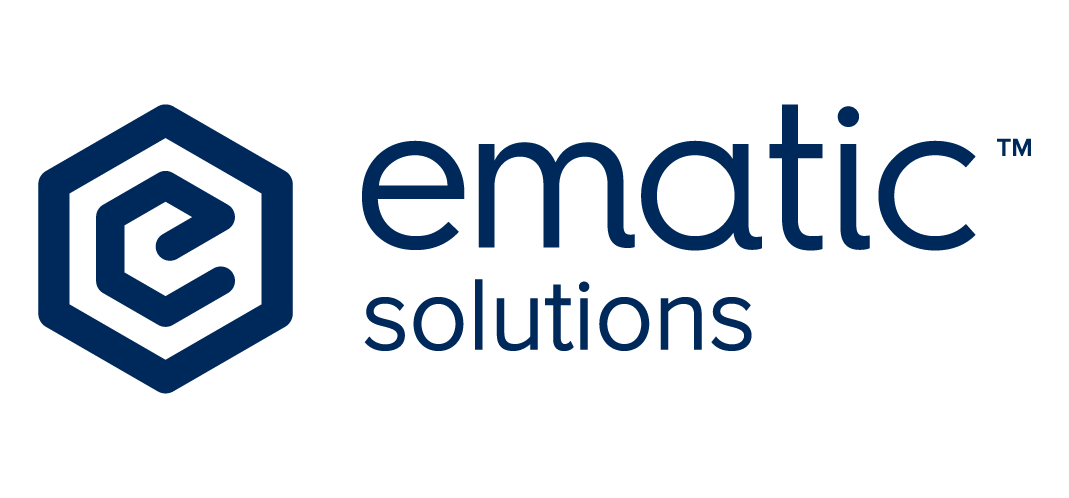A holistic SEO checklist for 2022
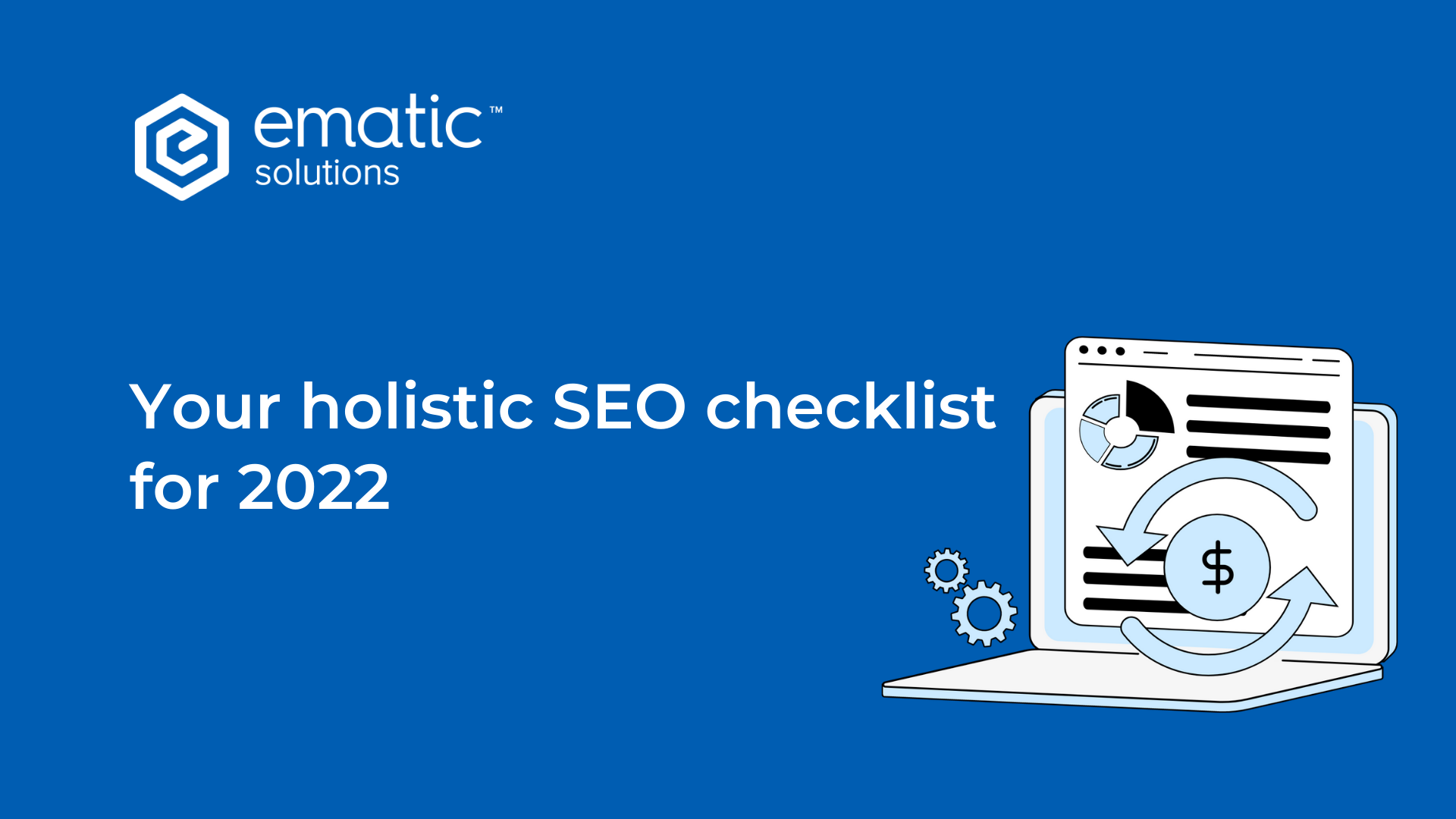
SEO is far beyond just writing content with keywords we think our potential customers may fill in those little search bars in different search engines. It encompasses a whole range of different audits, analyses, and actionable plans. But not as complicated as it may sound, the process can be divided into 6 steps, each of which has a different set of checklists that we can easily follow. Ematic has compiled those checklists below for you to have a quick look at your current SEO. In each of the steps, we also note some of the things (if any) that we do differently compared to other SEO agencies in the market. You can also contact us so that we can guide you through our own steps in a more in-depth session. Download the checklist here. Competitor Review In fact, prior to this step, the first thing we need to do is to look at ourselves in general. Some questions we may ask include: what our strategy towards SEO is, what our target market is, how we are doing with our website, whether or not some of the popular keywords related to our products/services show up in search engines, etc… Although detailed analyses of our own SEO performance will be incorporated into later steps, this quick check will probably give us a rough idea of our current state and hopefully help us set some expectations for the project. There is an old saying that goes: “He who sees through life and death will meet most success.” Indeed, when we can identify our competitors, what they have been doing, and where they are standing right now in the market, we can choose to follow best practices or decide to go our own way for differentiation. Doing competitor analysis is one of the best ways to identify customer insights through keyword research. This also helps us figure out what functions on their websites may bring the most value to their (and our) customers. The more information we obtain, the more options we have when we think about our strategy to compete. All in all, there surely is a reason why our competitors showed up in the top search results, right? At Ematic, the first thing we do when it comes to SEO is to conduct thorough research on potential competitors. Below are some headings that you can choose to follow for your own quick competitor check. What to do Research product/service categories of the competitors Research competitors’ main keywords Identify their organic search volume in the latest months Identify their organic search volume growth history Research their customer insights Identify their useful website features Technical Audit A website is a place where we showcase our products/services, direct our customer journeys, pin featured offerings, display sale promotions, or collect customer info from sign-up forms. Needless to say, it is the single most important asset for those who rely on websites to sell. As a result, helping search engines understand our products/services and customers is crucial. Only then, search engines can know who our potential customers are and suggest our website to match with their searched keywords. The list below suggests several aspects you can look into when it comes to optimizing your website for better search engine optimization. What to do Consolidate duplicate URLs URL structure Breadcrumb XML sitemap Robots.txt Robots meta tags Page 404 error Schema YMYL & EAT Core web vitals – page speed score Keyword & Content Planning Search engines were born for users to get answers to various problems in their lives. Therefore, we need to figure out exactly what problems our target audience is currently having; from that, create content that helps them identify and solve their problems through using or buying our products or services. One important thing to note is that when building content, we must first focus on bringing the RIGHT and VALUABLE information to our customers, rather than the length of the article. Even though word count is one criterion Google uses to evaluate website content, this should be the last step for optimization and improvement to meet the guideline, rather than the initial focus when starting to draft our pieces of content. Also, tactics to fool Google’s algorithm may bring short-term success. However, in the long run in case Google updates or changes its evaluation criteria (which is the thing Google does quite often), content that lacks insights into helping customers solve their problems will surely become useless and fall out of the top positions. Besides the mentioned issues, below are the steps you can follow for your keyword & content planning phase: What to do Identify keywords gap with competitors Conduct content overview (pay attention to thin content and duplicate content) Prepare content guidelines & SERP insights Prepare keyword list & suggested topics Do content writing Conduct website content monitoring On-page Optimization “How much traffic does our website have?” – This is a very easy question since we can check it every day on Google Analytics. Now, let’s tweak it a little bit: “How many landing pages on our website bring in that amount of traffic?” – This is tough, right? On average, only 5% of the landing pages on our website bring in 80% of the total traffic. The other 20% is brought in through another 25% of the landing pages. This indicates that a noticeable number of landing pages (70%) contribute 0 traffic to the website! As a result, continuously conducting on-page optimization is a must to make sure we keep bringing a good amount of traffic to our ecosystem. The principle of this phase is, therefore, to identify potential keywords and populate them in relevant articles. At Ematic, we have a special approach in this step for better management and optimization, but you can take the checklist below as the starting point. What to do Optimize heading & outline Add keywords in the page title & meta description Add potential keywords & paragraph Add Internal links Add Images Off-page Optimization An
Ematic’s Approach to SEO: Technical and Marketing Overall Focused
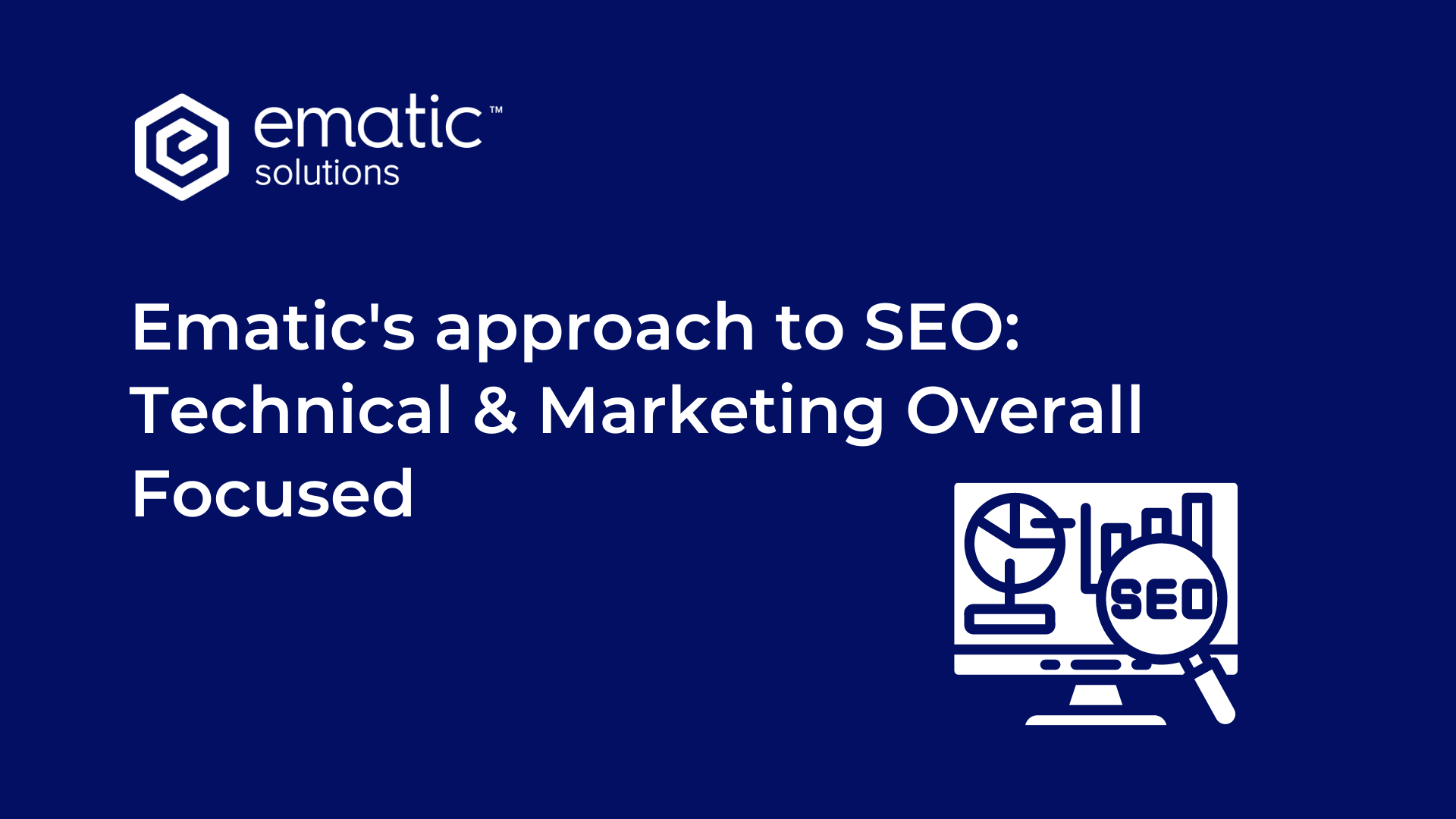
Asia currently accounts for more than half of the global internet users while continuously leading the world in economic growth. This makes building a strong online presence a must for any business. However, gone are the days of the money game when more ad spending means more awareness and conversion. The immediate impact of the Covid-19 crisis has dramatically cut down marketing expenses (as a proportion of revenue), well from an average of 11% to 6.4% in 2021. Also, social media advertising is becoming more and more expensive with skyrocketing CPAs (cost per acquisition) that gradually draw marketers away from this used-to-be gold mine that once brought in a stable and profitable flow of online traffic. As a result, CMOs start paying serious attention to a more ROI-secured set of channels, one of which is SEO.
Introducing Ematic’s new SEO service
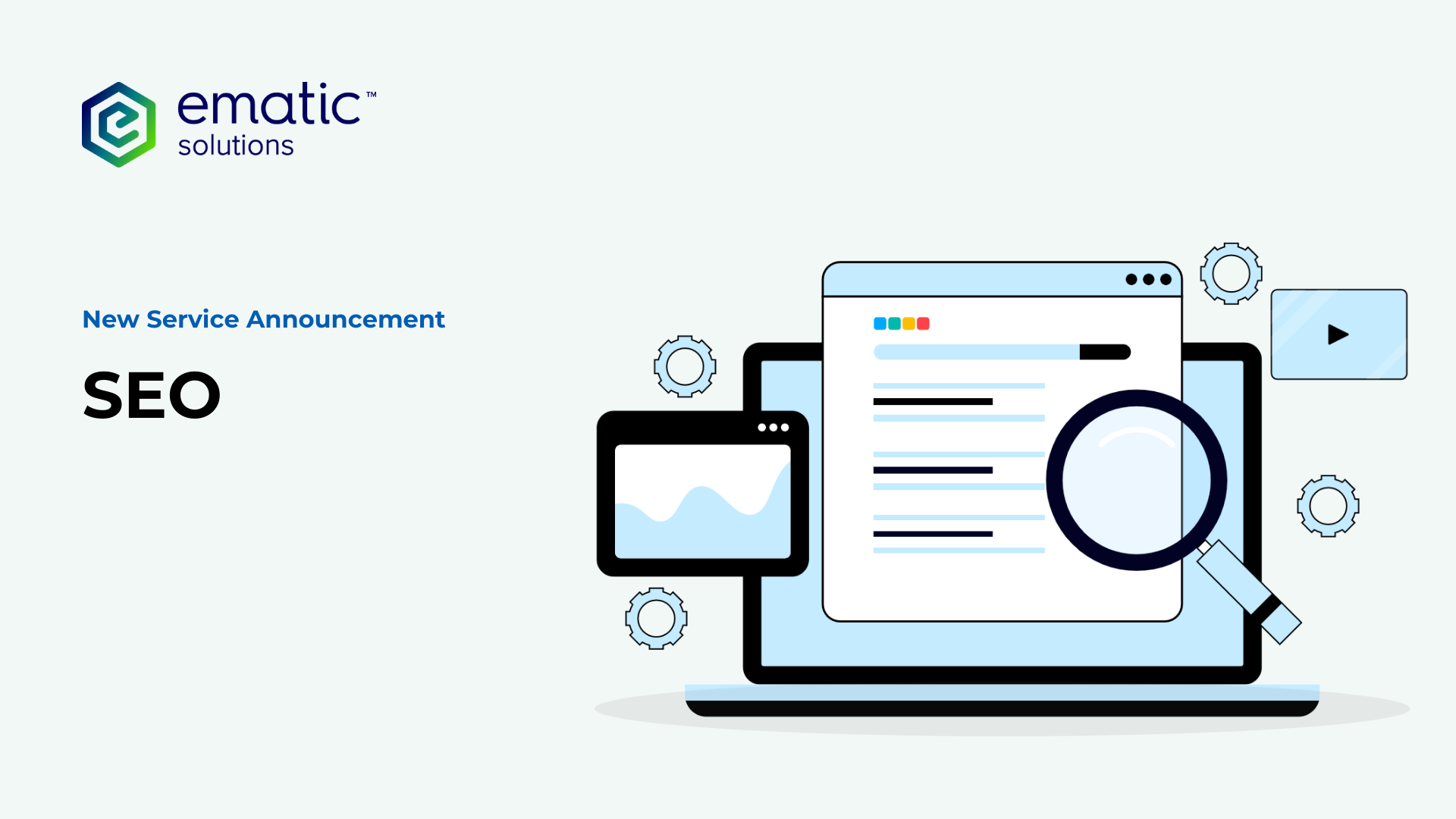
Does it occur to you that online competition is getting fierce, and it’s harder to sustain a good profit from just relying on ads to bring customers? Let us introduce you how Ematic’s new SEO service can help.
Reimagine marketing automation with Ematic
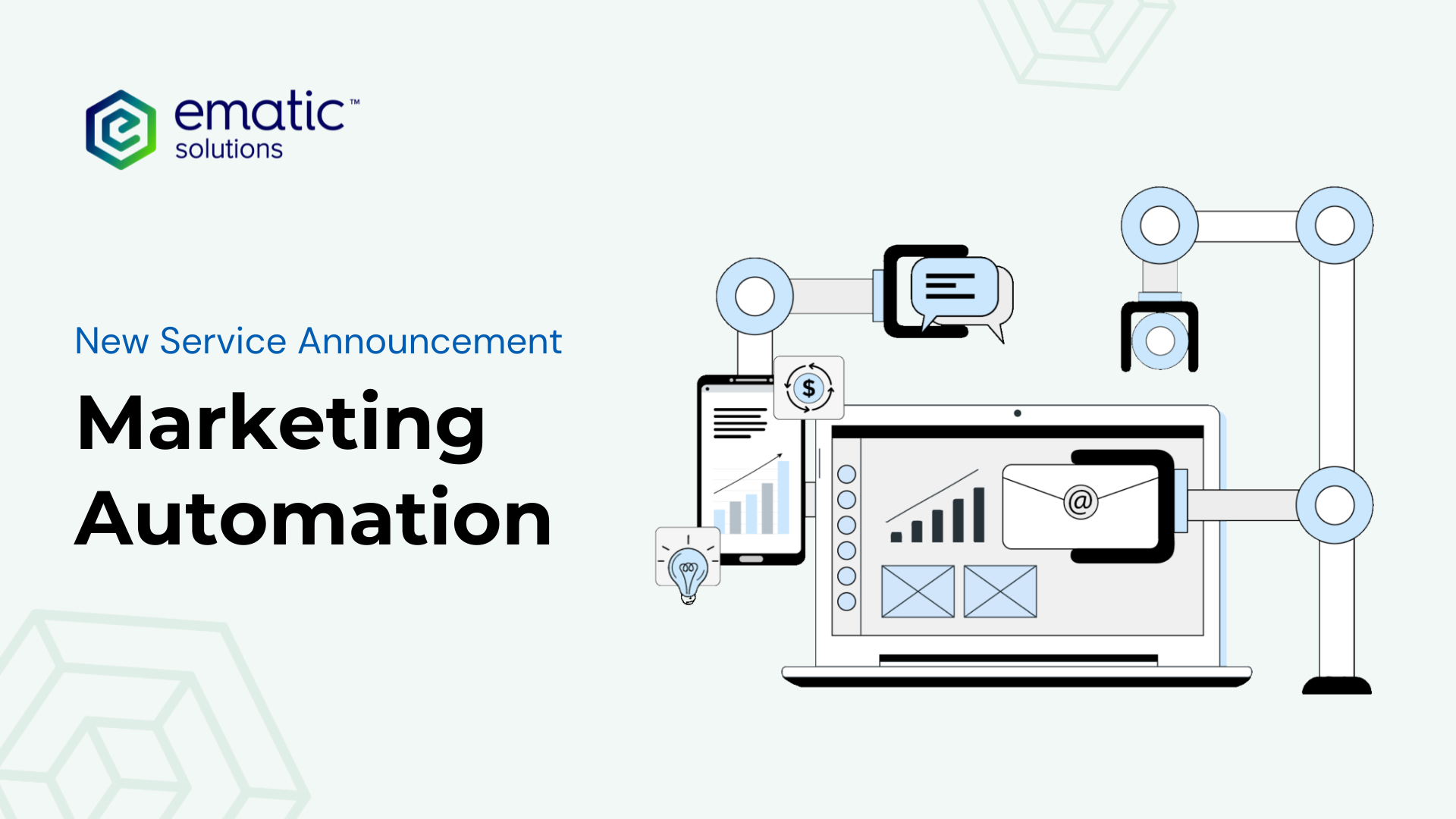
We are excited to share some really good news – announcing Ematic’s new marketing automation services to help businesses implement, accelerate and optimize their customer journeys, workflows and cross-channel messaging capabilities. What is the service about? Although marketing automation is meant to help simplify the process, setting it up properly might be more complicated than one would expect. To deliver the right content to the right person at the right time requires a matrix of domain expertises from business, marketing, data, design to operation intersecting each other. For many businesses, it is a significant undertaking to get everything in place. Therefore we are offering a set of new services to complement your marketing automation needs. We bring essential expertises to all parts of the process, including strategy planning, technical setup, campaign creation/management and analytics and optimization. Whether you want to simply compliment in designated areas or require end-to-end support, we are sure we can tailor an action plan based on your business objectives and current settings. Who is this for? Ask yourself if you have been in need of : Specialist knowledge and/or skill – You want to activate marketing automation but you are short of necessary skills or expertises to design/ set up a journey and ensure everything is logically correct Resources – You have amazing automation ideas, but there’s always a missing piece from the puzzle – be it the data, the creatives or content support Optimization – You have long since implemented an automation flow but aren’t seeing the returns you expect Challenges can come from any part of the business, and we are not limited to a single dimension of problems. For example, it may be that the challenges have stemmed from the business strategy, or the technical implementation, but we’ve got your back. What’s special about our approach? We don’t treat marketing automation as “set it and forget it”. We believe marketing automation and customer journeys need constant attention to really benefit your business. At Ematic, we apply an agile marketing approach to deliver your business objectives – starting with fast activation of high ROI opportunities, and continuously develop your marketing automation roadmap over time. Followed with continuous analysis, testing and optimization, we create a process to turn your marketing automation into a spinning growth flywheel. Additionally, our methodology allows you to kickstart more easily without an overly expensive, lengthy initial setup investment. Not only do we have a time-based pricing structure, but we also roll-over any un-utilized hours to the next period, so that it gives you the flexibility of managing any given fluctuation during the engagement. Ending note At Ematic, our mission has always been to deliver real results for marketers. Since our humble beginnings of being “the Mailchimp guys”, over the past 10 years, we have expanded and helped numerous businesses adopt the right technologies for their marketing endeavors. Learning from our customers and the state of the market, our new services are designed to tackle the broader underlying challenges beyond technology to drive real impact. We are able to curate this service by marrying the learnings to the expertise we readily have in-house. With so much to unlock, we hope you are as excited as we are to begin the journey with our new services. Check out our marketing automation service to learn more about how we are able to help you, or contact us directly.
9 Inspiring Examples of B2C Marketing Automation

This content is provided by our partner Campaign Monitor. Campaign Monitor is the premium, best in class email marketing and automation tool. Content source: https://www.campaignmonitor.com/blog/email-marketing/9-inspiring-examples-b2c-marketing-automation/ Marketing automation is designed to simplify the email marketing process for your entire digital marketing team. These automated emails are highly effective and have the ability to drive massive revenue and results for businesses, as they achieve 86% higher open rates, produce a 196% increase in click-through rates, and generate 320% more revenue than standard promotional emails. With stats like that, marketers can’t deny the power of marketing automation. What is B2B marketing automation? Marketing automation is the process of software automatically sending campaigns to your customers and prospects based on triggers you define. As opposed to one-off email campaigns that you create and send to a whole list of people, automated emails are set up once and then sent out each time a subscriber meets your pre-defined trigger. What is marketing automation primarily used for? Marketing automation is an excellent and powerful way to engage with your customers, and is particularly useful for marketers who are looking to streamline email campaigns to reach the right subscribers at the right time. What are marketing automation platforms? Marketing automation platforms are the providers of the automation software. These platforms provide marketing teams with various technologies to help them spread their marketing efforts across multiple channels, including email, social media, and websites. What are the benefits of marketing automation? When it comes to marketing automation, there are simply too many benefits to list. However, there are a few that are worth noting: Reduces repetitive tasks: Freeing up the marketing team’s time. Personalization: Making the customers feel as if they’re more than another face in the crowd with unique messaging. List segmentation: Allows you to deliver relevant content to the right readers. Even better, automation has reportedly resulted in 80% ROI, +46% growth, +26% more leads, and more productive marketers. 9 examples of B2C marketing automation 1. Welcome email series Welcome emails are your first chance to make a great impression on subscribers. Using marketing automation, you can create a stellar experience for your subscribers with a one-time welcome email or a series of emails that help onboard them. Broadway.com, the online retailer of tickets for Broadway shows, is a great example. They place a subscribe form at the bottom of their website to capture subscribers, and, when someone completes the form, they send them a welcome email with valuable discounts to incentivize their first purchase. By sending the email immediately after someone subscribes, Broadway.com maximizes opens, clicks, and purchases by presenting the subscriber with discounts while their business is still top of mind. Sending a welcome email like Broadway.com is a simple way to drive revenue back to your business. Check out this next example from Topshop: Right off the bat, Topshop engages their newest subscribers with an immediate offer to get them shopping and offers a small discount. You can also send a series of educational or onboarding emails like Birchbox does. Birchbox first sends a welcome email after subscribers have signed up. Then they follow up the welcome email with an automated series of messages, including beauty tricks, makeup tips, and special offers to keep their subscribers loyal and engaged. 2. Reminder emails Sending a reminder email based on a date is a great opportunity to not only deliver a timely message to your customer, but also keep them buying your products and services over time. Nissan collects relevant information about their customers, including the purchase date of their car. They can then use the purchase date to automatically trigger a reminder email six months after the car was purchased to schedule the first service appointment. Maintenance fees after the car is sold account for a huge portion of Nissan’s overall revenue, so this is an important part of their strategy. 3. Birthday or anniversary Sending your customers, a special offer on their birthday or anniversary is another highly effective strategy to drive revenue while increasing customer happiness at the same time. The first step is to collect your customer’s birthdate and add it to your email list. Many companies, like jewelry retailer Monica Vinader, make this a required field through the online checkout process, while others ask for this information when someone signs up for their email list. Once you have your customer’s birthdate in your email list, you can set up an email to automatically send on his or her birthday. While the leading message should be celebrating your customer’s birthday, this email is an excellent opportunity to generate revenue, so try including a special birthday discount to encourage recipients to make a purchase. You could also use this to recognize the birthday or anniversary of someone signing up for your product, making their first purchase, or other user or company milestones. Check out this example from Birchbox: 4. VIP It’s simple to set up a series of automated emails that can make your VIP customers feel special and keeps them engaged and spending. Sephora does an excellent job with their VIB (Very Important Beauty) Program, which offers early access to new products and special promotions for customers who spend a certain amount of money. Once someone spends the required amount, they’re entered into the VIB segment of the email list and automatically receive an email introducing them to the VIB program. This email welcomes them to the program and provides an exclusive VIB-only offer that encourages them to make additional purchases. You can do something similar using data you have to trigger a customer journey based on someone entering a VIP segment. We even provide pre-built segments for this purpose. Check out this engaging example from Converse that similarly welcomes their VIPs and offers a discount: 5. Re-engagement You can encourage email subscribers who haven’t purchased in a while with an email-exclusive offer, “Save on your next order” discount, or abandoned cart deal like Nau does in the
A Look Back at the Best Emails from 2021

In the past year, there have been some heavy-hitters in terms of effective email campaigns and we wanted to give credit by highlighting some of the best emails from 2021.
5 Martech trends you need to know for 2022
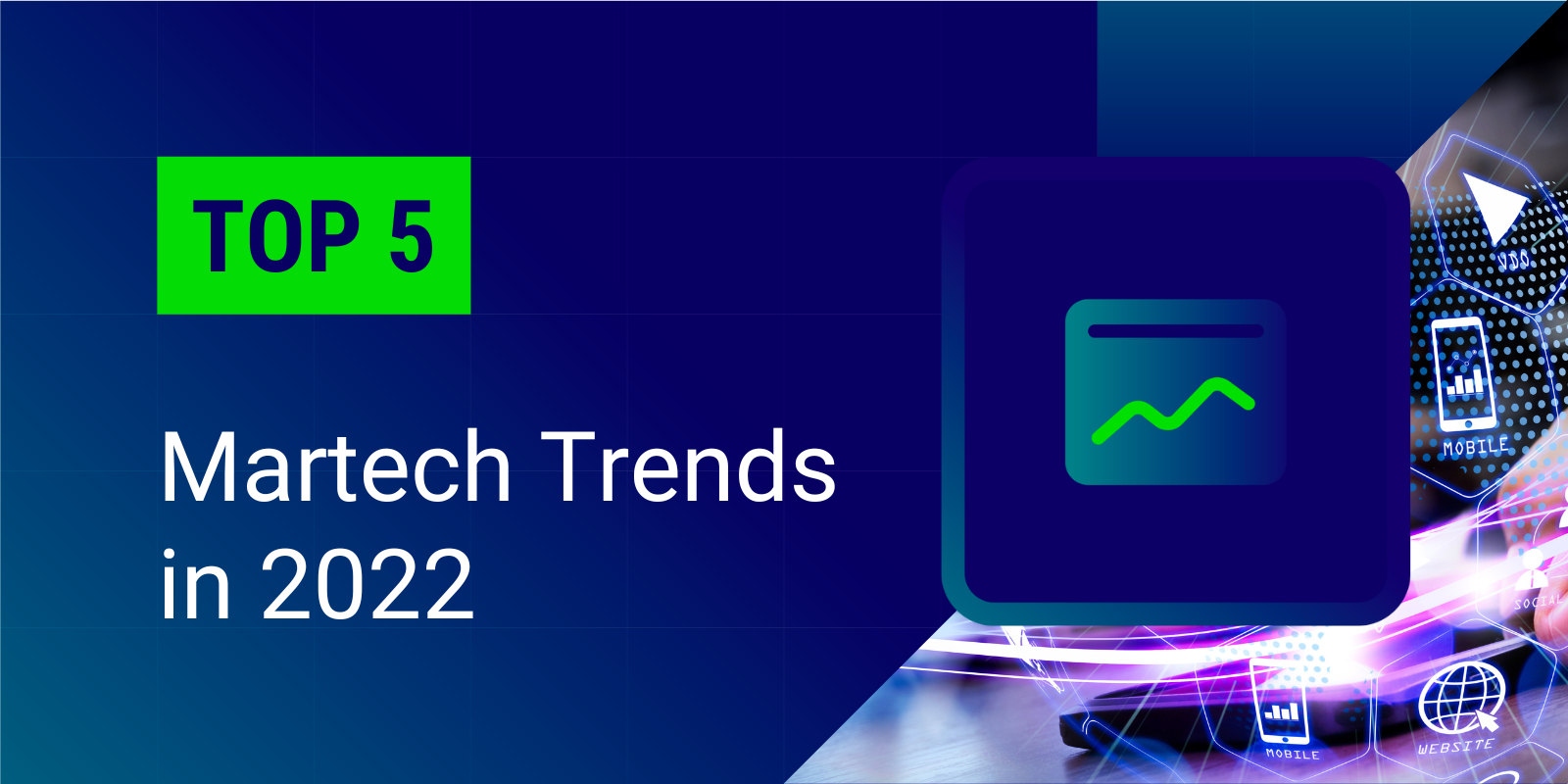
As digital transformation accelerates, many businesses now see marketing tools as a fundamental investment. In 2021, the COVID-19 has facilitated the growth of online sales. Looking forward to 2022, how would marketing technology evolve, and what are some new trends worthy of attention? Here we summarize the top 5 marketing technology trends, to help you navigate through the dynamic market landscape. #1 Get ready to the cookie-less future Almost every marketer knows the era of data privacy is coming, yet more than three in five brands are not ready for a cookie-less future, found Adobe. From third party data to first- , zero- party data Despite Google extending the third-party cookie phase-out to 2023, marketing leaders have limited time to rethink their marketing strategy with owned data (first-party, zero-party) in mind. After all, the removal of third-party cookies from Chrome (65% of the global browser market) means significant erosion on the accuracy of audience targeting and effectiveness of advertising campaigns (ROAS). The need to centralise customer data in one place A future-proof cookie-less solution involves first- / zero- party data , user cohorts, contextual and more AI-driven ensembles to understand and interact with audiences. First party data is the data your customers give consent for you to collect, like website behaviour, email, phone etc. Zero-party data is data that your customers intentionally share with you – think of the data you collect from the customer survey, quiz etc. Both first- and zero- party data come directly from your customer and are owned by you. Despite customer-centric marketing being no new concept, it becomes unignorable in the cookie-less era. The need of using a centralized customer data platform (CDP) to streamline data collection, build a single view of customers and connect data to multiple channels thus arises fast. In western countries, CDP has been widely adopted. Around 50% of businesses either have adopted or are adopting a CDP solution. In Asia, the progress started slower. However, as the massive consumer migration from offline to line, the demand of customer data integration grows rapidly under COVID-19. In 2022, we expect to see a significant uptake of CDP adoption. Advice from Ematic The direction is clear, but the path is murky. The problem a lot of brands are facing nowadays is indeed not the technical integration, but the lack of a data plan. Remember, simply hosting data will not help you solve anything until you start using it. If a full-blown “first-party data strategy” sounds too daunting, you can always start testing the water with mapping your key user journeys into narrow use cases and orchestrating cross-channel communication. #2 Personalization continues to conquer the market Now you want to put first-party/ zero-party data collection in your marketing game plan, but to do so you first need permission from your customers. Your success in consent-based marketing is built on a solid foundation of trust. Relationships are bilateral. Customers would be much more willing to share data with you when they know what value they exchange their data for. Remember when you agreed to share with Netflix three shows you like for a personalised recommendation? If so, then you know exactly what we are talking about here. Personalization becomes “Basic Expectation” It is no secret that personalization is no longer a good-to-have but a must-have. According to Accenture, 91% of consumers today say they are more likely to shop with brands that provide offers and recommendations that are relevant to them.. While 85% of businesses believe they provide a somewhat personalized experience to customers, only 60% of consumers agree with that (Twilio Segment, The State of Personalization 2021 Report) Obviously, there is a gap between what companies deliver and what customers really want. But where does it lie? Just doing as you already do is not enough, you need to do BETTER Firstly, personalization is about journeys, not sessions. Despite that brands own multiple channels to communicate with customers these days, these are often run in silo. As a result, similar marketing messages through the different channels reach the customer without orchestration, oftentimes resulting in annoying over-communication. On the other hand, while 70% marketers apply personalization on email, only around 20% use personalization in other channels. As a result, overall user experience remains fragmented. Secondly, personalization needs to be done at scale. Manual rule-based segmentation to deliver personalized experience only goes so far. Consumer behavior is extremely complicated and non-linear – they can browse several different things across several devices, get into something and soon be attracted by the other. Simple conditional rules cannot describe them well, but setting up a lot of rules is also overkill. That’s why most of the personalization is done on a small scale. Luckily, AI can be used to alleviate such problems and realize real 1:1 personalization, with its capability to quickly understand the real intent of customers, predict actions and provide real-time recommendations. With the necessity to deliver better personalized experience, it is imperative for marketers to keep multi-channel orchestration based on user journeys and AI-supported predictions at the core. #3 Channel spotlight: Emails, chatbots and their trends Among all the marketing channels, emails and chatbots are in the spotlight of 2022. Email is back (and cooler!) Thought email is outdated? Well, think again. 78% of marketers said they’ve seen an increase in email engagement over the last 12 months. In addition, Email still performs as one of the highest ROI marketing channels, according to a survey by Hubspot. Aside from its decent performance in driving engagement and conversion, email addresses are used as a common user identifier that connects other first-party data. No wonder email has made a strong comeback in recent years. On social media, we’ve seen marketers actively trying new formats to wield their creativity. In email, there’s no exception. More and more brands start to include interactive content to drive engagement. Some examples include British Airways, who use a countdown timer to remind customers of the time left in the sale; Amazon’s direct rating
Mixpanel: A product analytics to convert, engage, and retain more users

About Mixpanel Are you transforming your business with data? Mixpanel can help you gain insight into every step of a customer’s journey to see exactly how they’re using your product. This product analytics solution provides unparalleled tools to slice and dice the data on your product, from retention and engagement to funnels and cohorts. It is the leading web and mobile analytics platform used by over 6,000 customers to understand your users better and build better products. Using Mixpanel, you can learn about your product’s behavior: what motivates users to complete a specific event? Where does traffic drop off? Moreover, with Mixpanel, you can unlock actionable insights based on events in real-time. From there, you can see the trends across your entire product. Mixpanel Features Besides Mixpanel, some powerful platforms are available in the market right now, such as Amplitude. Both platforms are powerful, self-serve analytics tools that give deep insights into your customers. Mixpanel is designed for a mid-market segment, while Amplitude is suitable for a high-market segment. Mixpanel offers two different tiers of pricing depending on your company’s goals. You’ll be charged based on a Monthly Tracked User (MTU) or event-based. On top of that, Mixpanel has a variety of features that will be helpful to your team in different ways: Interactive Reports: With a few clicks, you can query your data and get visualizations in seconds. This makes it simple to answer inquiries about how your product is being used, who stays, and much more. Team Dashboards & Alerts: Summarize how the items you send affect the figures that matter, and track all of your product’s KPIs in one spot. Limitless Segmentation: Any form of analysis can be broken down by any event or user property, such as operating system or location. Group Analytics: Calculate measures such as product uptake, active usage, and retention at the account or company level. Data Integrations: Set up and simplify the exploration of product and user activity data without the need for SQL. Data Management: Define, manage, and transform your data with ease so that you can confidently analyze it. Security & Privacy: By adhering to international data regulations such as GDPR, CCPA, HIPAA, and others, your information will remain confidential and secure. Scalable Infrastructure: Analyze your raw user event stream data at scale, with no pre-computation required. How Ematic Can Help If you’d like to learn more about Mixpanel, Ematic can assist you to set up a demo and guarantee you’re receiving the best deal. Furthermore, if additional assistance is required, we provide implementation services and consultancy to ensure a seamless onboarding and maximum adoption of the solution. To find out more, please contact us!
Future-proof your customer data infrastructure

Now more than ever, customers expect personalized, integrated, and frictionless digital experiences – and it’s rapidly changing how businesses build and adapt their customer data infrastructure. Therefore it’s no surprise that businesses are demanding solutions that provide more flexibility, visibility, and control over how they collect and integrate their customer data. Achieve your goals today and adapt for the future We’ve discussed the shift in how businesses adopt and deploy software, moving away from the “build or buy” mentality to a combined model of implementing customizable infrastructure “building blocks” that allow for adaptability. Businesses are also becoming increasingly aware that flexibility is crucial to future-proofing their data integration strategy, ensuring sustainable data infrastruture and meeting the needs of customers in this evolving landscape. Whether you choose to build, buy, or some combination of the two, a future-proof data infrastructure will meet your company’s needs today and offer the flexibility to adapt for the future. That’s why trends like composability are gaining so much momentum. Composability allows for extensibility and the customization of out-of-the-box features that enable new business scenarios and use cases. According to Gartner, 60% of organizations will seek composability in new application investments by 2023 because monolithic application experiences no longer meet the requirements for continuous business agility. How Twilio Segment tackles composability Understanding the importance of composability, Twilio Segment introduced “Destination Actions” – a new framework for building, enabling, and configuring destinations on their platform that allows adapting to any use case with composable customer data integrations. The destination actions feature: Easier setup – Destination Actions eliminates the majority of required settings in the destination setup process by moving hardcoded mappings from code to UI-based configuration. Increased transparency – Each partner destination and associated product capability is exposed in a well-defined schema that is visible directly in the Twilio Segment UI. Customizability – All settings are made modifiable at both the field level and endpoint level. For example, a user could re-wire a track call to update a user profile in a destination. Customizability without sacrificing usability Customer data platforms like Twilio Segment are used across the business by a wide variety of teams, from Engineers and Developers, to Marketers, Product Managers, Data Analysts, and more. These teams work tirelessly to meet the diverse needs of your customers…shouldn’t your CDP do the same? Destination Actions offers the customizability that developers expect without requiring as much code, so less-technical teams can extend their customer data integrations however makes the most sense for them. Let’s take a look at an example… A travel booking company, Fly Inc. wants to use Braze to send targeted emails for their holiday traveler campaign, but the standard configuration doesn’t quite fit its use case. With Braze’s Actions-based destination, only a few settings are required to get data flowing. Once the user reaches the Mappings screen, they have full transparency and flexibility into how their data is delivered. In this standard configuration, we’re sending events, purchases, and customer traits to Braze, using three different Actions. Fly Inc.’s main purchase event is Trip Booked, but our Braze classic destination registers purchases as Order Completed. By using the new Braze Actions-based destination, they can easily edit this trigger to fit its use case. What if the campaign requires more personalized targeting? Let’s say, for instance, Fly Inc. wants to include people who visit their pricing page, but supporting page calls is not a Braze best practice out-of-the-box. With Braze Actions, the user can add another instance of the Event Action, but this time, trigger the event when the pricing page is viewed. Next, they can edit the mappings to get an event in Braze called Viewed Pricing. This is just one of the many ways that Destination Actions can be used to customize how data is sent to downstream destinations using Twilio Segment. Available Actions-based Destinations on Segment Segment focuses on adding more action-based destinations as the core competency. There are 5 action-based destinations integrated seamlessly with Segment, including Amplitude: event tracking and segmentation platform for web and mobile apps Braze: engagement platform that delivers omni-channel messaging experiences Customer.IO: automated messaging platform to craft and send emails, push notifications and SMS messages Full Story: Event tracking and segmentation platform for web and mobile apps Slack: Team communication and collaboration platform that offers IRC-style features like chat room and direct messaging And 4 more in Segment’s public beta: Google Enhanced Conversions Facebook Conversions API TikTok Conversions Google Analytics 4 Interested in Segment’s CDP? This content is provided by our partner Twilio Segment. Segment is a market leading customer data platform (CDP) by the silicon valley unicorn Twilio, which helps you unify your customer data for all sources and create a single view of the customers. Content source: https://segment.com/blog/introducing-destination-actions/
Adjust: The leading mobile measurement and fraud prevention for mobile marketing
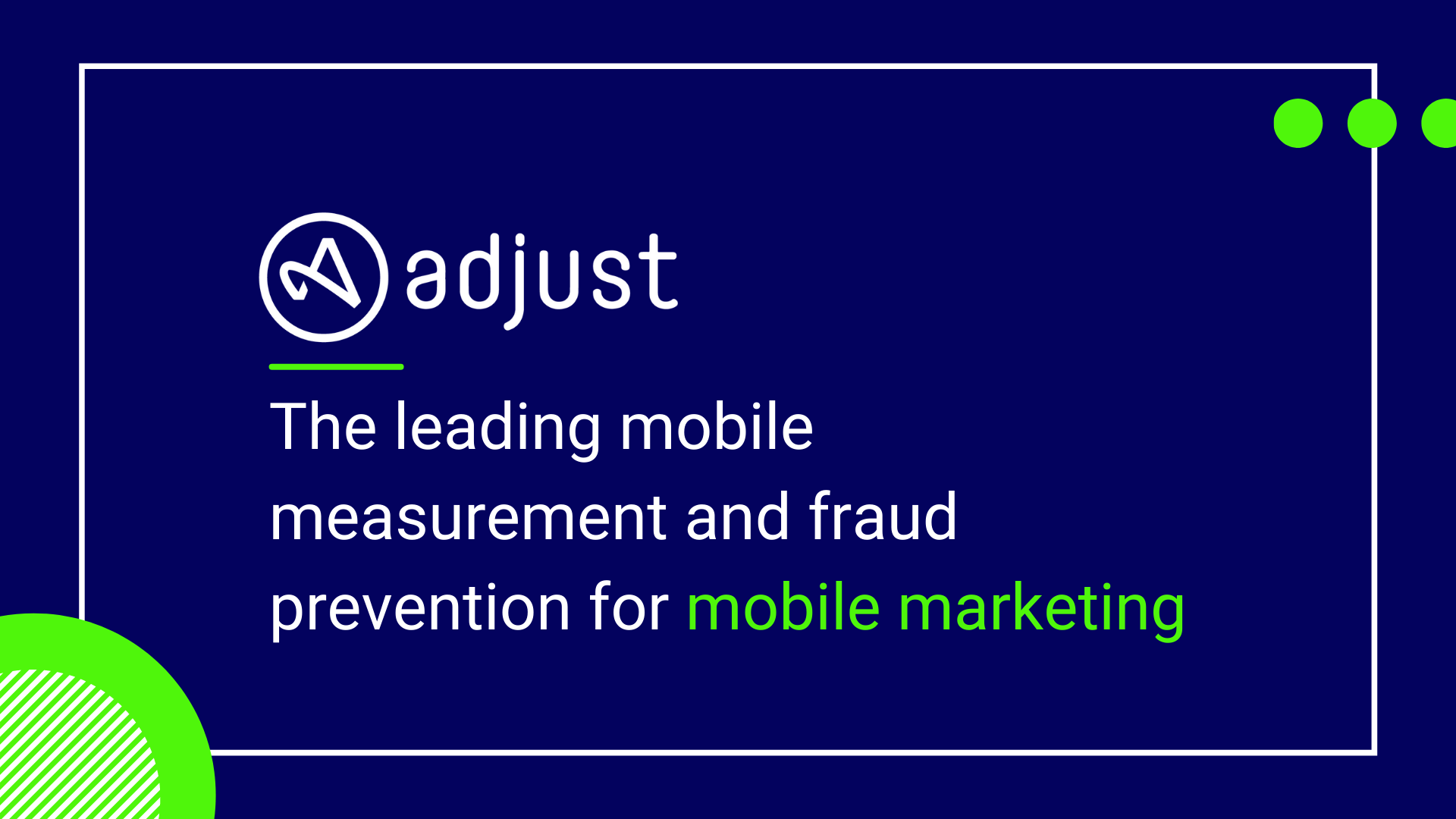
If you’re looking for a way to measure your marketing campaign performance or to analyze the users’ journey and behavior inside your apps, look no further than Adjust. It offers a suite of tools to make your marketing simpler, smarter, and more secure. Adjust is used by some of the world’s leading brands, including Spotify, Soundcloud, and Booking.com. Adjust helps you to track the performance of your campaigns in real-time, making it easy to optimize and adjust your strategies as needed. But what exactly is Adjust, and why is it so important? To create a truly successful mobile app, you need to have a solid attribution model in place that allows you to track and prove the effectiveness of your marketing across channels. One of the biggest challenges that marketers face nowadays is gaining accurate insight into exactly where their ad dollars are going — and what’s working and what’s not. Mobile attribution can help you to answer these key questions: Which marketing channels are performing the best? How many leads or sales came from a particular marketing campaign? Which marketing campaigns are most effective at driving conversions? Are there any problems with the customer journey that need to be addressed? Once armed with this data, you can better understand which marketing channels are most effective in driving downloads, active users, and ultimately revenue. Mobile attribution is changing the way marketers approach their business – so it’s time to scale up your marketing efforts. There are a number of mobile attribution providers currently on the market, including Adjust, Branch, and AppsFlyer. Branch and AppsFlyer both offer highly competitive features, with the latter being known for its simplicity of use. For Branch, they are focusing on deep-linking and caters to Enterprise. Appsflyer and Adjust, on the other hand, are ideal for the mid-market. Moreover, if you’re looking for a more affordable solution with an easy to set up and manage, Adjust is the perfect choice for you. Adjust charged only for a non-organic install while other solutions such as AppsFlyer charged for both organic and non-organic installs. It’s not just affordable—it also has a lot of features that you would find in more expensive solutions to measure, automate, and protect your marketing campaigns: Attribution: Track your users’ journey and/or behavior from a single source across multiple marketing channels while measuring engagement, installs, in-app actions, and other key performance indicators (KPIs). Fraud prevention: Detect and prevent fraudulent activity in real-time, so you can be sure that your marketing dollars are being spent in the most effective way possible. Analytics: Get a complete picture of your users’ interactions, marketing efforts, and campaign performance. ePrivacy Certified & GDPR Compliant: Full protection and security covering your personal data. Control Center: Adjust and automate your campaign optimization so you can scale your mobile marketing more quickly, maximize your app ROI, and continue to invest in what’s working. Open-source software: Free access to analyze, alter, and improve the code and integrate it with as simple as copy-paste. Audience Builder: Increase your top line revenue by building and sharing segmented audiences. Using a mobile app attribution platform like Adjust provides you with a bird’s-eye view of your data – a single, streamlined dashboard that you can use for in-depth analysis. Adjust also gives you the ability to make verified purchases and protect against fraud, ensuring that your data remains clean and reliable. If you’re looking for a comprehensive mobile measurement and fraud prevention solution, Adjust is the perfect solution. You will get an offer that you will not find anywhere else if you purchase from Ematic Solutions. On top of that, we can help you to arrange a demo for your teams and help you to get the most out of the platform. From account setup to platform training, we can help to make sure the solution is being installed correctly and running smoothly.
